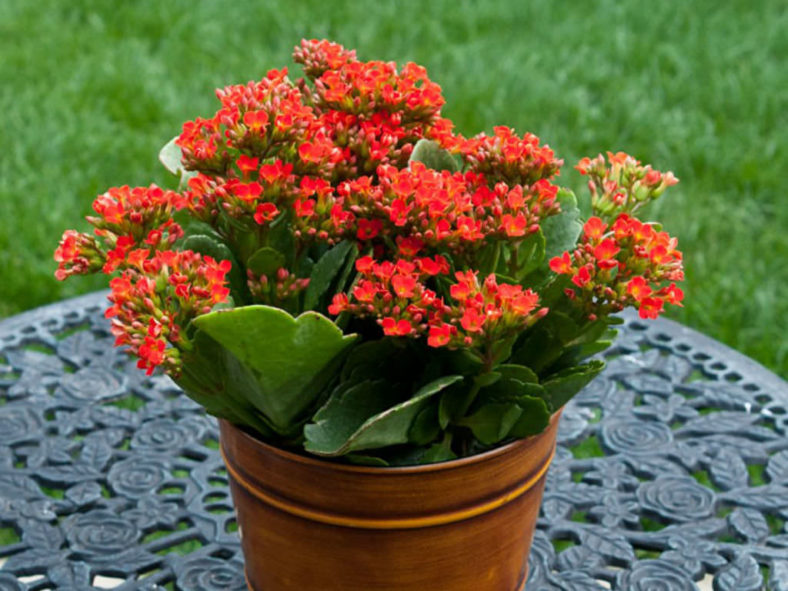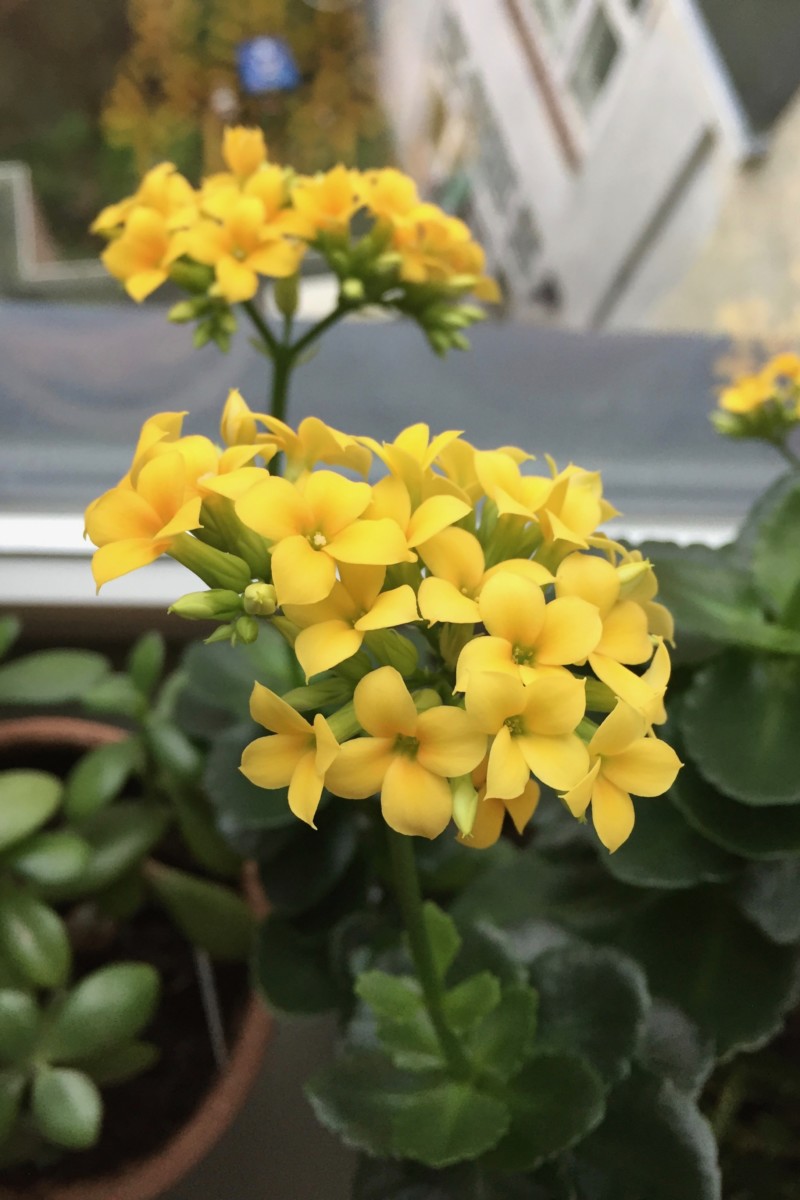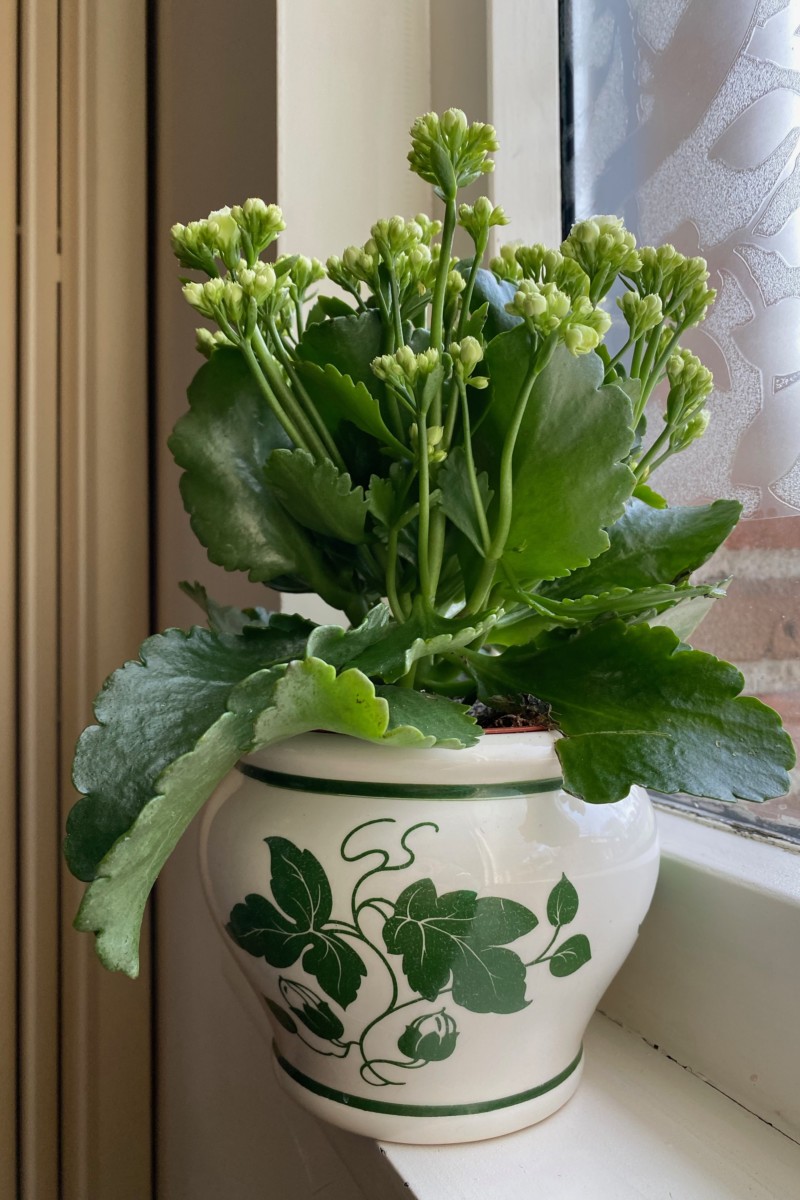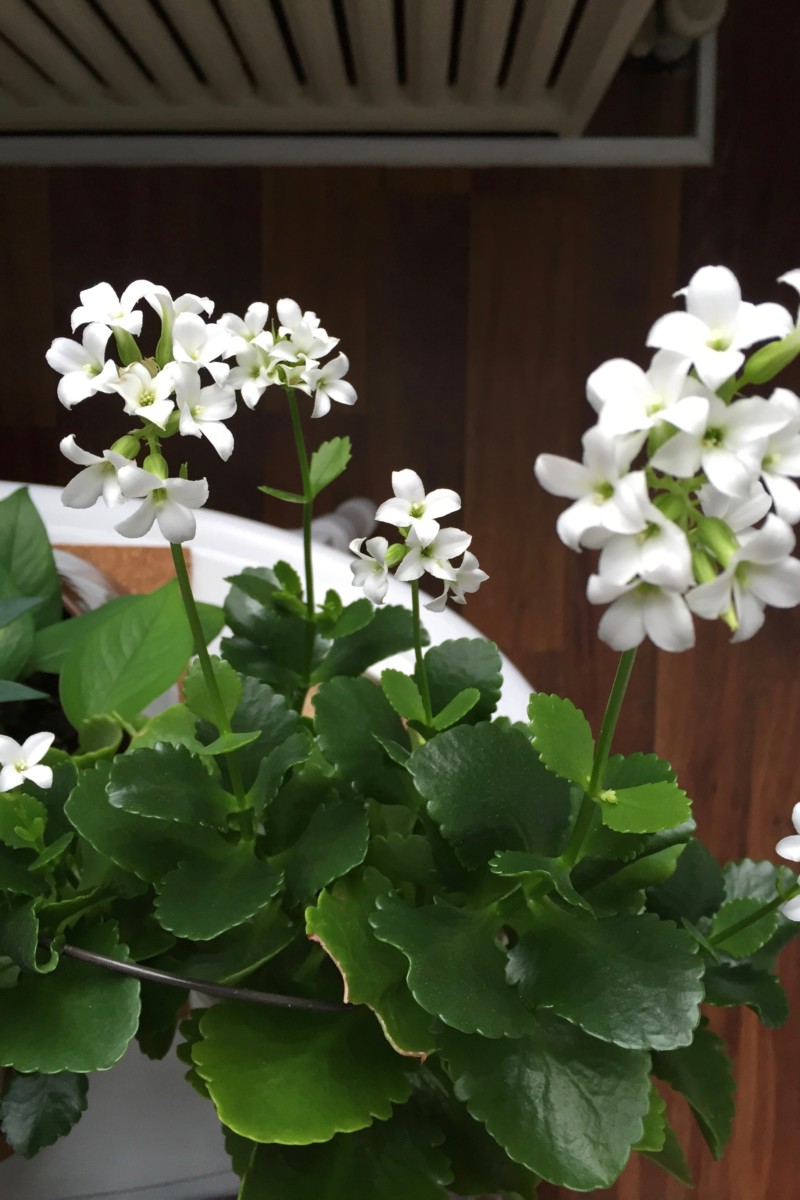If I showed you my six-year-old kalanchoe plant, you’d be hard-pressed to identify what it actually is. It looks part succulent, part weird sculpture and part mythical tree straight out of a fairytale penned by the Brothers Grimm.
This often happens to my houseplants because I’m a stubborn plant keeper. Some people simply dispose of their kalanchoe after it blooms, but I dig my heels firmly in the “I can make this flower again” camp.
So far, so good! My oldest kalanchoe plant is on its fifth rebloom in just as many consecutive years.
So if you’ve bought a kalanchoe as a holiday decoration and you’re tempted to just chuck it out with the Christmas tree, think again.
Kalanchoes are popular succulent houseplants known for their lush foliage and colorful blooms Their vibrant flower clusters in shades of red, orange, yellow, pink, and white make them stand out in any indoor space But how often do these plants actually produce flowers?
Like some other succulents, kalanchoes bloom once a year for a few months—but with the right care and tricks, you can get them to flower more than once. Here is a complete guide to understanding the kalanchoe bloom cycle and how to get your plants reblooming over and over again.
The Natural Bloom Habits of Kalanchoe
In their native tropical regions, kalanchoes can bloom nearly year-round when conditions are right. But when grown as houseplants, they tend to flower during the late winter and spring.
The key factor influencing their bloom cycle is light exposure. Kalanchoes are short-day plants meaning they will produce flowers when the days start getting shorter in the fall and winter. During this time, they require at least 12-14 hours of uninterrupted darkness each night to form flower buds.
Once daylight hours start increasing again in spring, the flower buds will begin to open This results in a bloom period that typically lasts from late winter into spring—February through May in many cases.
So in their natural growth habit, kalanchoes will bloom once a year for a few months. But with some simple tricks, you can fool them into blooming more than once.
Encouraging More Frequent Blooms
Here are some tips to get your kalanchoe to rebloom more than once per year:
-
Cut back on water and fertilizer – Allow the plant to enter a brief dormant period by reducing water and fertilizer. This signals the plant to conserve energy.
-
Give extended dark periods – To mimic short winter days, place the plant in a dark closet or cover it for 12-14 hours every night for 6-8 weeks. This long dark period will initiate flower bud formation.
-
Provide bright light – After the dark treatment, return the plant to a sunny south or west facing window to encourage the buds to open. Bright light signals spring to the plant.
-
Pinch off old blooms – Deadhead spent flowers by pinching them off to direct energy into new buds instead of dead blooms.
-
Stick to optimal conditions – Keep the plant at 65-75°F and allow soil to dry out between waterings for robust reblooming.
With this simple process of manipulating light and mimicking seasonal changes, you can fool kalanchoes into blooming multiple times per year. Just be sure to allow recovery time between periods.
Factors that Influence Natural Bloom Frequency
Aside from intentionally inducing blooming, there are some other factors that play a role in kalanchoe’s natural bloom habits:
-
Plant variety – Some kalanchoe species or cultivars bloom more readily than others. For example, Kalanchoe blossfeldiana is known for abundant flowers.
-
Plant maturity – Mature, well-established kalanchoe plants tend to bloom more freely than younger plants. Allow new plants time to grow before expecting many flowers.
-
Sunlight – Kalanchoes require ample sunlight, at least 4 hours of direct sun per day, to trigger blooms. Too little light results in no flowers.
-
Soil and watering – Allow soil to dry out between waterings and use well-draining soil. Excess moisture inhibits flowering.
-
Temperature – Cooler temperatures around 60-70°F help encourage blooms. Avoid excess heat above 80°F.
-
Pruning – Pinching off spent blooms promotes reblooming by directing energy into new buds. Regular deadheading is key.
-
Fertilizer – Use a balanced houseplant fertilizer at 1⁄2 strength during growth periods to fuel blooms. Avoid overfeeding.
By optimizing these factors in their care, you can maximize kalanchoe’s natural bloom potential.
Troubleshooting Lack of Blooms
If your kalanchoe isn’t blooming, here are some common issues to check:
-
Insufficient sunlight – Kalanchoes require very bright light, like a south or west window. Too little light prevents flowering.
-
Too much fertilizer – Excess fertilizer leads to weak, leggy growth unable to bloom. Stick to occasional light feeding.
-
Incorrect temperatures – Blooms suffer if the plant gets too cold (below 50°F) or too hot (above 80°F).
-
Overwatering – Excess moisture can cause root rot. Allow soil to dry out before rewatering.
-
Pests – Check for pests like mealybugs and scale insects. They sap plant energy needed for blooming.
-
Natural dormancy – Periodic leaf drop and rest is normal. Allow time to rejuvenate before new flowers.
-
Insufficient dormancy – The plant may need a stronger dark period trigger to enter bloom mode.
With proper care catered to kalanchoe’s preferences, most plants will reward you with their signature flowers. Focus on providing the right amounts of light, water, and dormancy periods for the most abundant blooms.
The Takeaway
-
Kalanchoes naturally bloom once a year in late winter/spring for a few months when grown as houseplants.
-
They require extended darkness to initiate flower buds, followed by ample sunlight for the buds to open.
-
With light and water manipulation, you can trick kalanchoes into blooming more than once per year.
-
Adequate sunlight, proper temperatures, deadheaded spent blooms, and well-draining soil are vital for continual maximum flower production.
-
Troubleshoot lack of blooms by adjusting care to match the plant’s needs.
With the proper growing conditions and care, kalanchoes will delight you with their colorful flowers. Understand their natural rhythms and bloom habits for ongoing success growing these flowering succulent beauties.

Find a “darkness routine” for your kalanchoe.
For my plants, I found that two months of natural rest usually hit the right spot. For my kalanchoe to flower again at the end of November, I start these preparations in late September.
That’s when I move the kalanchoe from their usual spot next to a large south-facing window to our much darker and much cooler bedroom. I roll down the light-blocking blinds around 5 PM and keep them down until 8 AM the following day. That gives my winter-blooming plants a period of rest of about 14 hours.


When I didn’t have a separate room available, I cleared a shelf in my coat closet for my kalanchoe collection. I’d put it in there when I came back home and took off my coat; I then took out the pots in the morning when I opened the closet door again to retrieve my coat.
If there’s no space in any of your closets, you can place the plant under the kitchen sink, in a spare bedroom or in the darkest corner of your house. Alternatively, you can place a bucket, a paper bag or a cardboard box on top of your kalanchoe for 14 hours every day. But only if you set a reminder on your phone to get into the habit of bringing your kalanchoe back to light.
I wouldn’t count on my frazzled memory to remember to uncover the plants. So what worked for me was tying this action to an already existing routine.


Once the plant sets buds, you can stop worrying about mandatory darkness. Just place it somewhere you can enjoy its showy display of blooms. My plants go back to their usual spot in the south-facing window. Which, to be fair, doesn’t get too much sunlight from November to March anyway.
What do I do with my kalanchoe after it blooms?
Once the flowers are gone, all you have to do is treat it as you would any other succulent. The beauty of this plant is that, even without flowers, the glossy scalloped leaves make for a very attractive houseplant.


If you place it in a sunny spot and give it water when the soil feels dry to the touch, it will continue to grow and thrive all through the summer. If you want the clusters of bright colorful flowers to come back, then you’ll need to make some adjustments come fall.
How to Force Kalanchoe to Bloom | Kalanchoe Plant Care Guide
FAQ
How to keep a Kalanchoe blooming?
-
Light:Kalanchoes are short-day plants, meaning they need a period of darkness to initiate bud formation. To promote blooming, expose the plant to 14 hours of darkness and then 10 hours of bright, indirect light. Avoid direct sunlight, which can scorch the leaves.
-
Temperature:Kalanchoes prefer warm temperatures, ideally between 60-75°F (15-24°C) during the day and slightly cooler at night, around 60-65°F (15-18°C).
-
Soil:Use a well-draining soil mix, such as a mix of regular potting soil and perlite or sand, to prevent root rot.
-
Watering:As succulents, Kalanchoes are drought-tolerant and do not require frequent watering. Allow the soil to dry out between waterings to avoid overwatering.
-
Fertilizing:During the growing season (spring and summer), fertilize with a balanced, water-soluble fertilizer diluted to half strength every few weeks.
-
Pruning:Trim off spent flowers to encourage new growth and maintain the plant’s shape. Pinch back stems to promote bushier growth and more blooms.
-
Photoperiodism:Kalanchoes are photoperiodic, meaning they bloom in response to changes in day length. By controlling the amount of light they receive, you can encourage them to rebloom.
Do Kalanchoe bloom more than once?
-
1. Provide a Rest Period:Kalanchoes need a period of shorter daylight hours and longer nights to trigger new flower buds.
-
2. Reduce Light Exposure:For about 6 weeks, provide the plant with only 8-9 hours of daylight per day. You can achieve this by placing it in a dark closet or a room with limited light.
-
3. Water Sparingly:During this rest period, reduce watering to encourage the plant to focus on producing new buds.
-
4. Resume Normal Care:After 6 weeks, you should see the beginnings of flower buds. You can then return the plant to its normal location and resume watering and feeding as usual.
How long do potted Kalanchoes last?
If cared for properly, it can live for decades. Make sure not to overwater kalanchoe, which can cause root rot and prevent leaves from growing and blooms from flowering. You’ll know you’ve given your plant too much water if its leaves start to droop.
What are the flowering times for Kalanchoe?
Kalanchoe usually blooms just once a year for a few months in late winter or early spring. Outdoors it might bloom more often. If you want it to bloom more frequently indoors, you have to manipulate the growing conditions and trick the plant into thinking it’s time to bloom again.
